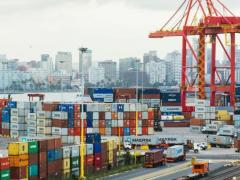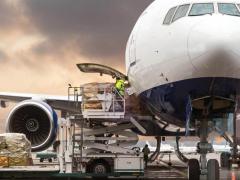The SA Agulhas II has returned from its Antarctica voyage during which its scientific team conducted crucial oceanographic and ice research in extremely adverse weather conditions.
Department of Forestry, Fisheries and the Environment deputy director general of oceans and coast, Dr Lisolomzi Fikizolo, welcomed the 62 members of the South Africa National Antarctic Expeditions (Sanae) team when it docked at the Port of Cape Town after completing the Marion Island special projects mission on Wednesday. The team, led by chief scientist Leon Jacobs, and captained by Michael Mdluli, spent the past 15 months in Antarctica, the coldest and driest place on earth, with temperatures as low as -30 degrees during the winter months.
Fikizolo said work the team performed included support for scientific data collection for local analysis and research and international collaboration.
“South Africa is party to many international agreements and organisations that we submit our data to, and in turn this contributes to the body of knowledge internationally to help humankind to better understand the impact of climate change in the Southern Oceans and all associated marine ecosystems.”
He said the latest Antarctic season had presented the team with a unique opportunity in the history of the South African National Antarctic Program as it was the first time in one season that two destinations – Antarctica continent and Marion Island – had to be covered during the southbound and northbound legs of the voyage.
“The logistical requirements for this Sanae voyage via Marion Island were extremely demanding, a situation which was further compounded by time constraints for its planning and weather conditions during its implementation,” he said.
However, the team provided the Department of Public Works and Infrastructure with the platform to undertake annual maintenance activities at the Sanae IV base and complete the removal of old infrastructure on Marion Island. The base is located on a mountainous outcrop about 180 kilometres from the ice edge area called the Penguin Bukta.
After leaving Cape Town 15 months ago, scientists from DFFE, the University of Cape Town and the Council for Scientific and Industrial Research (CSIR) sampled seawater and conducted specific atmospheric tests at regular predetermined intervals. These will be used to better understand the Southern Ocean’s role in drawing carbon dioxide out of the atmosphere while working against global warming.
“It was intended that CSIR would also deploy oceanographic gliders to better understand the changing role of storms in the transportation of carbon dioxide into and out of the ocean with the inevitable impact of climate change. Unfortunately, due to poor weather conditions, that part of the research plan had to be cancelled,” Fikizolo said.
However, Stellenbosch University, in collaboration with Aalto University (Finland) and the University of Cape Town, collected valuable data while the SA Agulhas II was transversing through ice. The data will contribute to gaining a deeper understanding of the physical forces of ice breaking on the hull and the general structure of the SA Agulhas II and validate modelled data of the sea ice.
The University of Stellenbosch also conducted a study to investigate participants' response to motion sickness at sea and the South African Weather Service (Saws) conducted meteorological observations, releasing weather balloons at regular intervals to gather data for forecasting.
On the land-based scientific research front, the overwintering science personnel were trained throughout the takeover period to maintain research instruments for Polar Space Weather Studies, Super Dual Auroral Radar Network (SuperDARN), the Neutron Monitor Programme, the Automatic Weather Station and the Nuclear Test-Ban treaty.
This team included the South African National Space Agency, the North-West University, Saws and the Commission for the Nuclear Test-Ban Treaty Organisation.
“Shielded antenna cables and trays for the SuperDARN radar were installed for the improvement of signal-to-noise ratio. The SuperDARN radar itself is used for studying plasma irregularities in the ionosphere and planetary winds. Studying the ionosphere is vital as it has a characteristic that reflects radio waves used by communication systems,” Fikizolo said.
The Sansa team conducted a major upgrade of the SuperDARN radar, including the successful commissioning of the secondary array known as the interferometer. For the first time in 10 years, the interferometer will be running, adding valuable data to the new SuperDARN radar.













